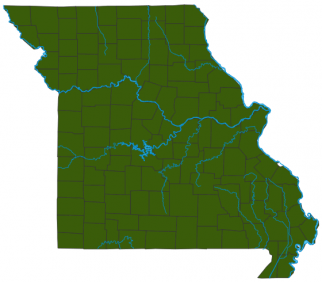A perennial plant, branched toward the top, commonly soft, with hairy stems and leaves. Flowerheads are small “daisies” with up to 400 ray florets, white, turning light pinkish lavender. No other Erigeron has so many ray florets. Blooms April–June. Lower leaves are spade-shaped with mostly rounded tips, short stems, sometimes lobed, the edges toothed or scalloped; sometimes withered by flowering time. Upper leaves stemless, partially clasping, usually with a pointed tip and oblong.
Similar species: There are 5 species of Erigeron in Missouri, nearly all of them found scattered statewide. Robin’s plantain (E. pulchellus) has larger flowers, 50–80 ray florets, and leafy runners at the base of the plant, which can form colonies. Two plants called daisy fleabane (E. annuus and E. strigosus) bloom May–September or November. Slenderleaf fleabane (E. tenuis) is scattered in the southern part of the state and blooms April–June.
Height: to 3 feet.

Scattered to common throughout the state; less common or absent from western parts of the Ozarks.
Habitat and Conservation
Occurs on banks of streams and rivers, edges of ponds and lakes, bottomland forests, moist upland forests and prairies, on bluffs and in fields, valleys, waste places, gardens, cemeteries, roadsides, railroads, and in open disturbed areas.
Human Connections
This species is widespread in North America, and several tribes used it medicinally for a variety of ailments, including as a cold remedy, analgesic, antidiarrheal agent, and poultice for sores; also to reduce excessive bleeding following childbirth.
Ecosystem Connections
The leaves of fleabanes are food for certain types of butterflies and moths, and the flowers provide nectar for an even greater variety of insects.





















